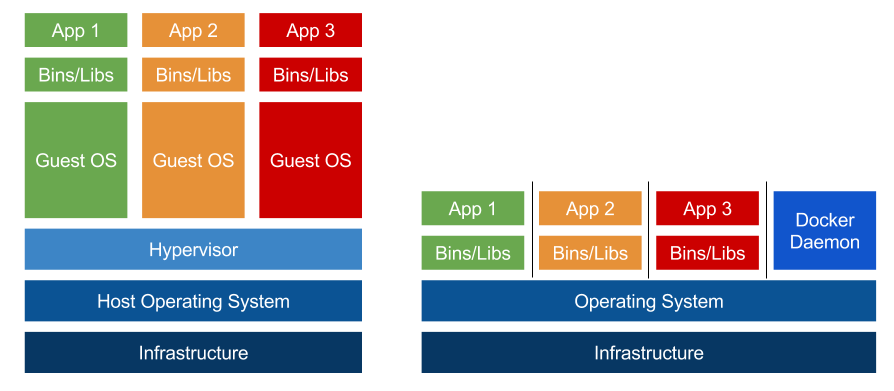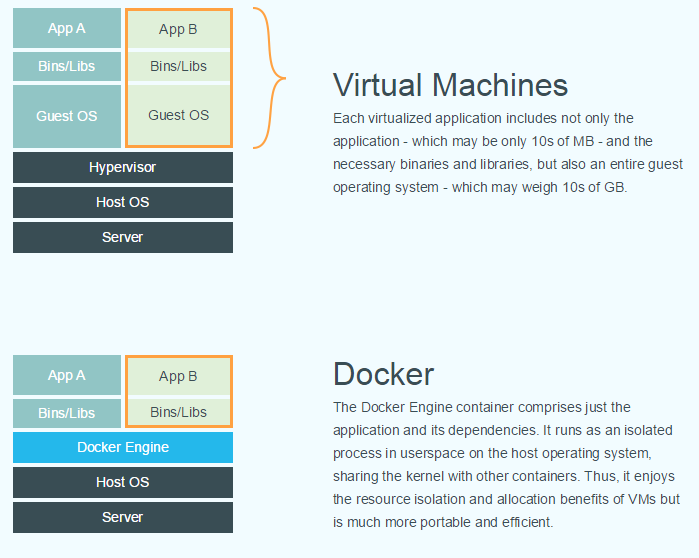- Security has also been an area of concern with Docker containers — since containers share the same kernel, the barrier between containers is thinner. While a full VM can only issue hypercalls to the host hypervisor, a Docker container can make syscalls to the host kernel, which creates a larger surface area for attack.
- Docker support for Citrix Hypervisor is a feature of Citrix Hypervisor 6.5 SP1 and can be downloaded from the Citrix Hypervisor download page. The support is delivered as a supplimental pack named 'xs-container' which also includes support for CoreOS and cloud-drives.
Watch the complete course at: the subscrib.
Do you want to install Docker on Windows 10/8/7 or server without enabling the Hyper-V (Hypervisor Platform)? Then here is the tutorial, the easiest way to start a Docker container on Windows…
Docker, an open-source platform offers containerized virtual machines to run various apps and operating systems in an isolated environment. As compared to other virtual machines software, the Docker is lightweight, and images on it use the system’s kernel to provide optimized speed. Moreover, the images meant to run on it are also stripped down or very light, for example, Ubuntu Image which is far small in size and lighter as compared to regular Ubuntu server CLI ISO available online to download and use.
In terms of version, Docker offers two editions one is Enterprise and the other community that is open-source software. Although the open-source which is free to use has all the functions required to operate containers and can be used on servers and on development to test machines; the things which make it different from the Enterprise version are the support and some management functions to also use them in productive operations.
So, if you don’t want to enable Hyper-V in order to preserve Virtualization support to other software such as VirtualBox or Vmware workstation player then here is the simple way to install Docker-CE on Windows 10 or 7 using the Docker ToolBox.
What we learn here:
- How to run Docker without using Hyper-V?
- Installation of Docker ToolBox for windows 10 and 7
- Pull and run Docker Images on Windows 10 without Hypervisor -Hyper-V
Pre-requisites:
- Docker ToolBox executable file
- Windows 10 or 7
- Administrator access
- Internet connection
Step to install Docker-CE on Windows 10 or 7 without Hyper-V using ToolBox
Download Docker ToolBox
The first thing we need is the ToolBox, a package that contains various tools that are: Docker, Docker-machine, docker-compose, Kitematic Web-based GUI, and VirtualBox. You can see that VirtualBox is there, thus in the Docker ToolBox instead of Hyper-V, it will use that to run the base Linux image to create further containerized machines. The Toolbox is available for both macOS and Windows 10/8/7 platforms, here is the Github page to download the executable binaries.
Run the installer
Once you have the installer using the above link, simply run it like any other Windows software. You will see the “Docker Toolbox Setup Wizard“. Click on the Next button.
Select Destination Location
By default like any other Windows application, the wizard will also install the Docker files and folder in the C: Drive. However, if you want to save it in some other directory then select that, here.
Select Docker ToolBox Components to install
The benefit of using the ToolBox is it comes with all the essential components we need for using the Docker including the Graphical user interface app called Kitematic to graphically install, start, stop, and delete Docker images pulled from Docker Hub. By default, all of them will be selected and it is recommended to let them as it is, however, if you are an advanced user then select accordingly.
Components are:
- Docker client for Windows
- Docker machine for Windows
- Docker Compose for WIndows
- VirtualBox
- Kitematic for Windows (Alpha)
- Git for Windows

Select Additional Tasks
To create various virtual containers the Docker uses a lightweight Linux distro and to run without Hyper-V it uses VirtualBox. Thus, leave the default options such as Upgrade Boot2Docker VM, Binaries to Path as it is, and click on the Next button.
Run Docker Quickstart Terminal Without Hyper-V
Finally, after installing everything you will see an icon on your Desktop- Docker Quickstart Terminal, double click on that to start the Bash terminal for setting up the Docker Virtual Machine image on VirtualBox.
Check the Docker working
Either you can use the same terminal window or open the Command prompt to check whether the Docker is working fine or not. On the Terminal type:
The above command will fetch the latest Docker image of Ubuntu from Docker Hub.
Start the Ubuntu container
One the image is pulled, run that as a container:
Docker Hypervisor Framework Fails
You will see the Ubuntu bash with root user, simply start running all the commands you generally run on Ubuntu Linux OS.

Kitematic GUI, Access Containers to run commands
In case you don’t want to use the command-line interface, then there will be another icon on your Desktop with the label “Kitematic (Alpha)” double click that to run. Select the VirtualBox option from its interface. You will see all the running containers on your system including the recommend images.
You can directly execute commands from the interface of Kitematic to your installed and selected container via PowerShell. Just select the container and click on the Exec option given on the menu. This will open the PowerShell to run container supported commands.
In this way, we can easily get all the benefits of Docker but without enabling Hyper-V on our Windows system. You can also install Docker ToolBox using the Chocolatey...
-->Windows containers offer two distinct modes of runtime isolation: process and Hyper-V isolation. Containers running under both isolation modes are created, managed, and function identically. They also produce and consume the same container images. The difference between the isolation modes is to what degree of isolation is created between the container, the host operating system, and all of the other containers running on that host.
Process Isolation
This is the 'traditional' isolation mode for containers and is what is described in the Windows containers overview. With process isolation, multiple container instances run concurrently on a given host with isolation provided through namespace, resource control, and process isolation technologies. When running in this mode, containers share the same kernel with the host as well as each other. This is approximately the same as how Linux containers run.
Hyper-V isolation
This isolation mode offers enhanced security and broader compatibility between host and container versions. With Hyper-V isolation, multiple container instances run concurrently on a host; however, each container runs inside of a highly optimized virtual machine and effectively gets its own kernel. The presence of the virtual machine provides hardware-level isolation between each container as well as the container host.
Isolation examples
Create container
Managing Hyper-V-isolated containers with Docker is nearly identical to managing process-isolated containers. To create a container with Hyper-V isolation using Docker, use the --isolation parameter to set --isolation=hyperv.
To create a container with process isolation through Docker, use the --isolation parameter to set --isolation=process.
Windows containers running on Windows Server default to running with process isolation. Windows containers running on Windows 10 Pro and Enterprise default to running with Hyper-V isolation. Starting with the Windows 10 October 2018 update, users running a Windows 10 Pro or Enterprise host can run a Windows container with process isolation. Users must must directly request process isolation by using the --isolation=process flag.
Warning
Running with process isolation on Windows 10 Pro and Enterprise is meant for development/testing. Your host must be running Windows 10 build 17763+ and you must have a Docker version with Engine 18.09 or newer.
You should continue to use Windows Server as the host for production deployments. By using this feature on Windows 10 Pro and Enterprise, you must also ensure that your host and container version tags match, otherwise the container may fail to start or exhibit undefined behavior.
Isolation explanation

This example demonstrates the differences in isolation capabilities between process and Hyper-V isolation.
Here, a process-isolated container is being deployed and will be hosting a long-running ping process.
Using the docker top command, the ping process is returned as seen inside the container. The process in this example has an ID of 3964.
On the container host, the get-process command can be used to return any running ping processes from the host. In this example there is one, and the process id matches that from the container. It is the same process visible from both container and host.
To contrast, this example starts a Hyper-V -solated container with a ping process as well.
Docker Hypervisor Is Not Running

Likewise, docker top can be used to return the running processes from the container.
Docker Fail: Hypervisor Framework Fails
However, when searching for the process on the container host, a ping process is not found and an error is thrown.
Finally, on the host, the vmwp process is visible, which is the running virtual machine that is encapsulating the running container and protecting the running processes from the host operating system.